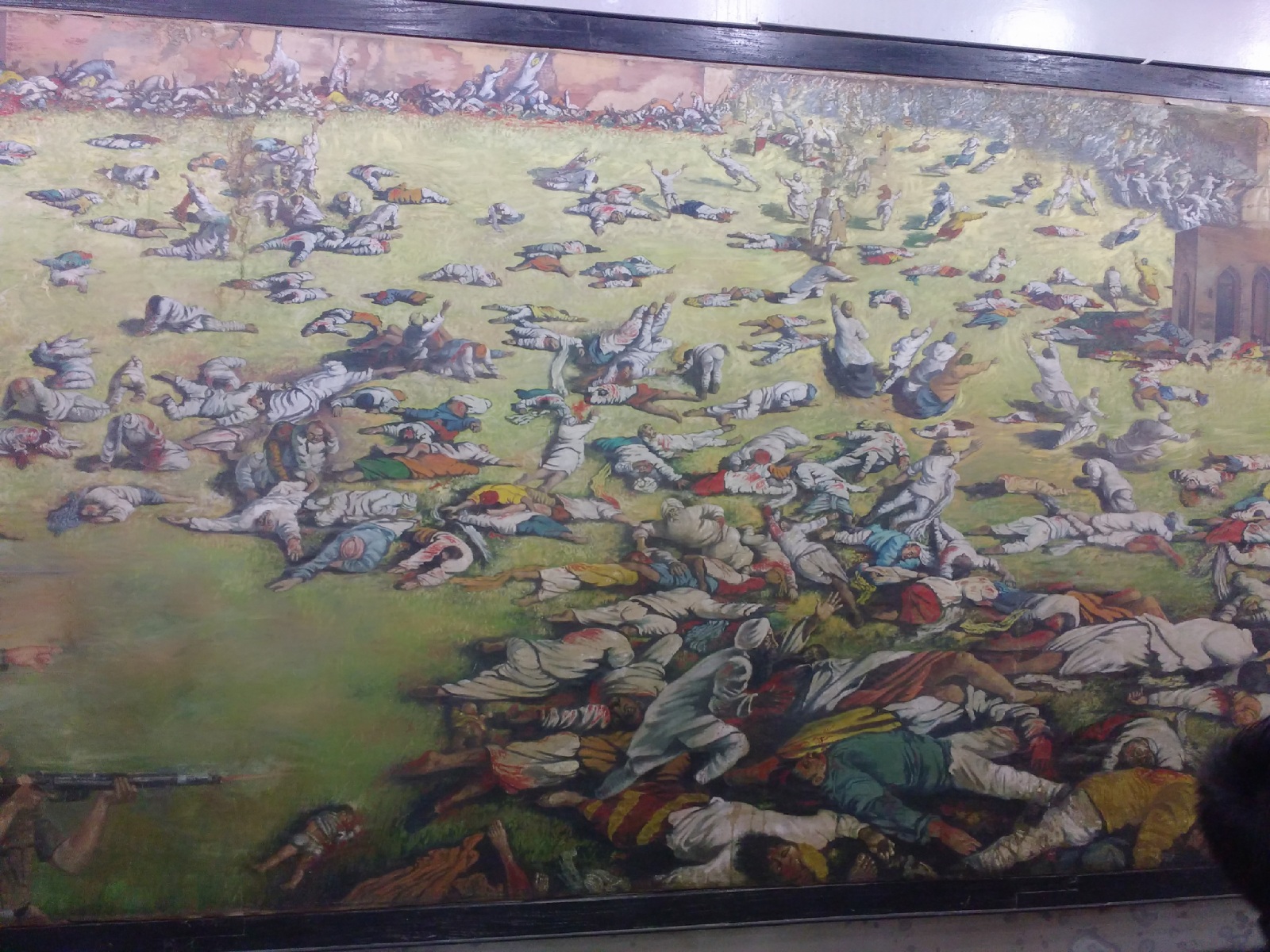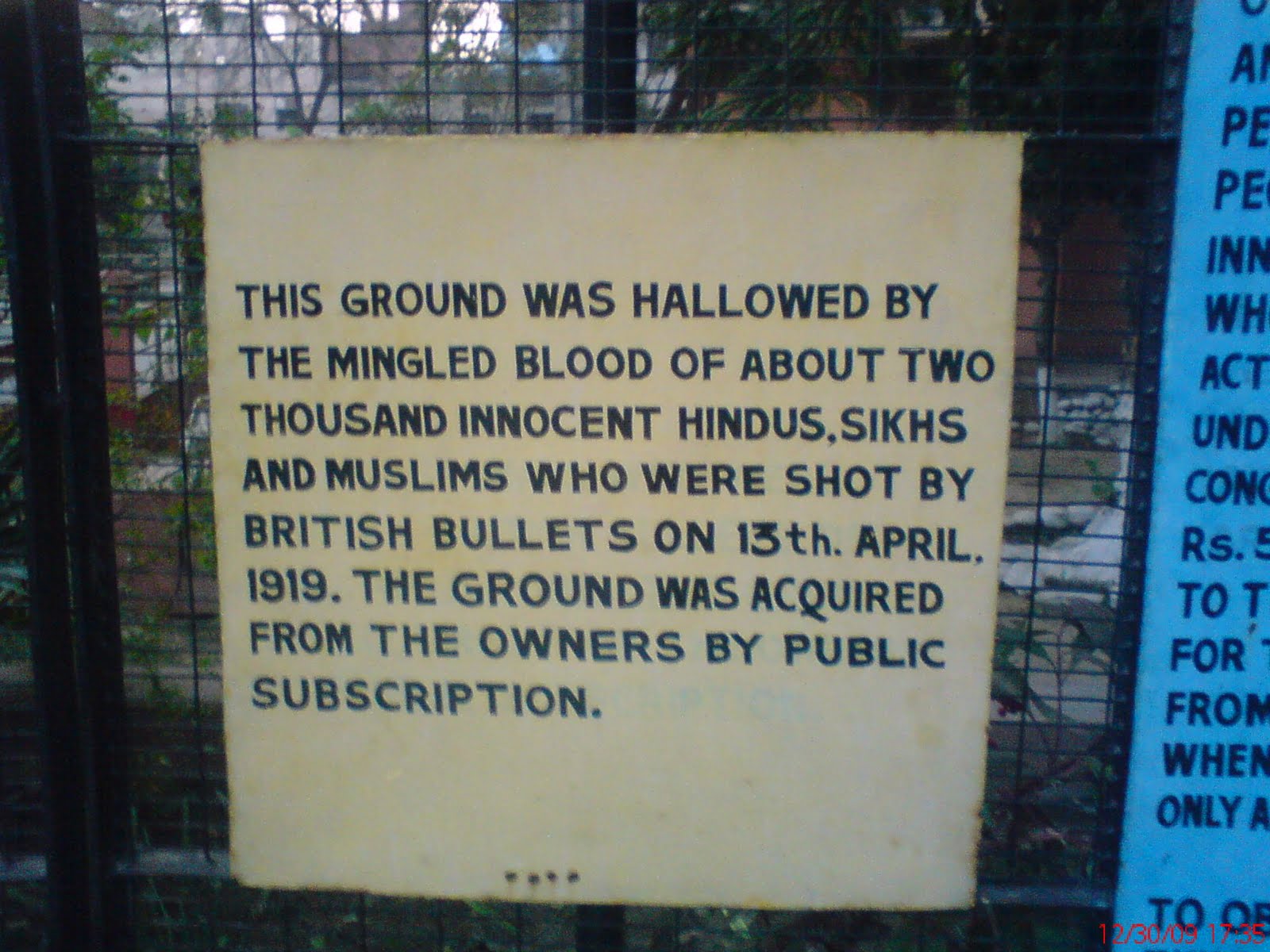
Amritsar Massacre
The Amritsar Massacre took place at a time of heightened social unrest in India after the First World War. Britain was wary of a socialist uprising in India due to developments in Europe in which socialist insurgency was seen in Germany and Hungary. This had followed the Bolshevik Revolution in Russia in 1917.
Indian society was also unhappy with the continuation of wartime restrictions on civil liberties that were extended after the war under the Rowlatt Acts. The war had also impacted the price of basic commodities which also fuelled discontent.

Sign at the Jallianwala Bagh, 2009
Source: Mike Lynch, CC BY-SA 3.0, via Wikimedia Commons
On 13 April 1919, hundreds of Indians had gathered at a public garden called the Jallianwala Bagh to celebrate Vaisakhi at a time of martial law. This meant that large gatherings were prohibited. Brigadier General Reginald Dyer, believing that the Punjab was on the verge of rebellion against the British, ordered troops to fire on those gathered at the walled garden of Jallianwallah Bagh leading to the deaths of between 379 to 1,600 people. The event shocked India and divided opinion in Britain. The massacre acted as a catalyst for the cause of Indian independence which developed into a popular movement in the early inter-war years.
Share this Article
Our Funders

